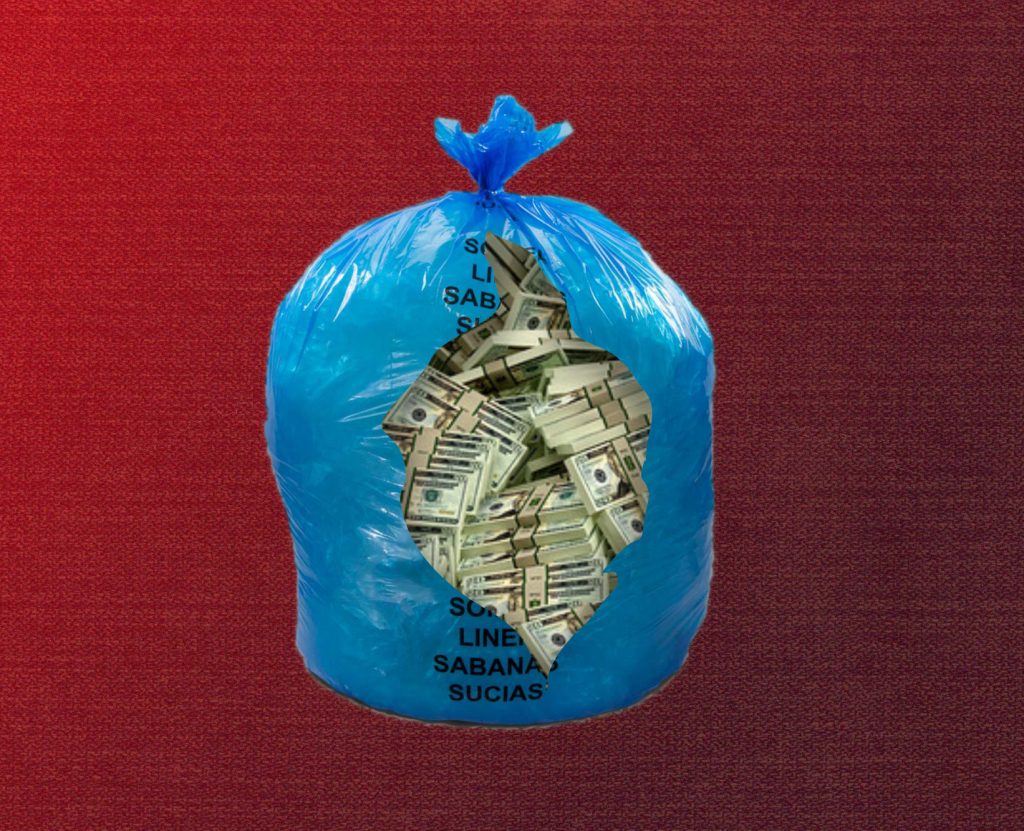For students who live off campus, the city of Binghamton’s blue bag garbage system is a constant source of frustration.
The city requires residents to use city-mandated blue bags to dispose of all household garbage. For a sleeve of five large bags, residents pay $6.95. A sleeve of medium bags costs $3.95. Both of these prices were increased by 20 cents in 2016, and the bags have seen gradual price jumps in previous years.
On the surface, this doesn’t seem like a hefty expense. However, taking into account that most Binghamton University students who live off campus have several roommates, garbage piles up quickly and often requires the use of multiple bags per week. Some students have reported paying $7, $10 and even $12 per week on blue bags. That weekly cost adds up and places a financial burden on all city residents, not just BU students.
The blue-bag policy was implemented in 1991 as a way to make residents pay a proportionate fee for how much garbage they produce, providing an incentive for people to produce less waste and to recycle. Before the current system, property taxes paid for trash collection completely, including the “tipping fee,” which is the cost for the city of Binghamton to dump its garbage at the Broome County Landfill. Now, the amount of money residents spend on blue bags covers the tipping fee. This effectively transfers the expense of garbage disposal from property owners to renters.
The Editorial Board understands the rationale behind the blue-bag system, but finds a number of issues with it. Consider that a five-pack of large blue bags costs almost $7 at Wegmans. For the same price, you could buy a 25-pack of large Hefty trash bags. If the blue bags were of higher quality, perhaps this could be rationalized, but that is not the case. Many students, including members of the Editorial Board, feel the blue bags are flimsy, rip easily and have actually declined in quality in recent years — even as prices have gone up. Since the system is mandatory, the least the city of Binghamton could do is make sturdier bags at prices and quantities comparable to other garbage bag brands.
Additionally, if the goal is to reduce waste, the Editorial Board is doubtful that the blue-bag policy has done much to reach this goal. In fact, people often use other garbage bags when collecting trash in their homes and then place those bags inside the mandated blue bags when it’s time to take out the trash. This ultimately creates more waste as multiple plastic garbage bags are disposed of.
Moreover, there have been multiple instances when stores like CVS and Wegmans simply run out of blue bags. Even if the bags are in stock, they can also be difficult to access. Not all city residents live near a store where they can easily buy the bags, and students without a car and elderly citizens who may not be able to drive must estimate the number of bags they’ll need until they can get to a location where the bags are sold. Since garbage will only be picked up if placed in the blue bags, people who cannot find the bags in stores or don’t buy enough while on a shopping trip are forced to keep their trash in their homes until the next garbage pickup, usually another week away. In fact, in August 2017, the city temporarily waived the blue-bag requirement, allowing city residents to put out up to six trash items per day without using blue bags. The policy was waived for two weeks after Binghamton Mayor Rich David received complaints about properties where trash had accumulated in yards or on porches. It is the city’s responsibility to ensure that stores are sufficiently stocked up with the mandated bags, and the city should make sure they are accessible to all residents.
The Editorial Board suggests the city of Binghamton re-evaluate its blue bag system. We are not proposing the policy be abolished, but there are surely improvements that can be made. For instance, the bags could be made available for purchase in bulk, eliminating the need for residents to restock weekly and making the blue bags more cost effective. As mentioned previously, the quality of the bags should also be improved to reduce the number of rips and thus lower the number of bags that have to be used.
It is clear that this is a system that affects students and community members alike, and is one that isn’t working for anybody. It’s not the first time residents have voiced concerns about the blue-bag policy, and it certainly won’t be the last if the city doesn’t modify its current system.



